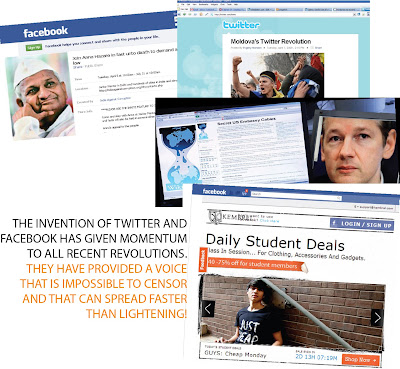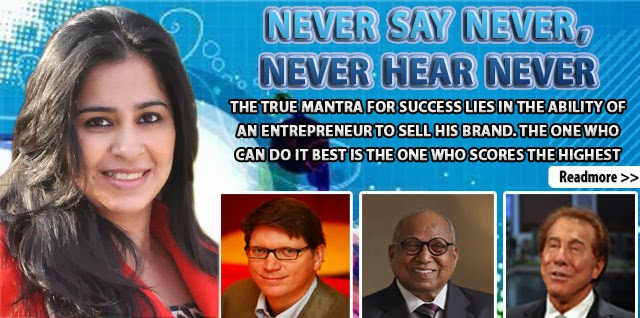Nothing is permanent
Conventional wisdom says ‘entry barriers’ should prevent new players and brands from upstaging their older and more established rivals. Yet, the marketplace is littered with example after example of new brands that have successfully climbed Mount Everest. How do they do it?
Nothing is permanent-in life, relationships and business! This eternal truth is brilliantly demonstrated by the rise, fall and rise of brands in the marketplace. Leaders of yesterday have become laggards today; and might become leaders again tomorrow or even disappear altogether. Students of economics and management are taught that every market has ‘entry barriers’ that make it very difficult, if not impossible for new players and brands to compete with and outperform older and well established rivals. But, what fascinates more than the so called entry barriers is the frequency and intensity with which new brands conquer more established rivals across the world. There are literally hundreds of such examples across sectors, geographies and segments. What makes the new entrants overcome formidable entry barriers and beat market leaders at their own game?
In contemporary times, technology and innovation play a key role in transforming late entrants into global power houses. Back in the early 1990s, when I was a management student, Microsoft was the unchallenged global leader. The advent of the Internet saw Yahoo first challenge the supremacy of Microsoft. Back then, nobody had heard about a word called Google. And yet, it is Google that is the undisputed and virtually unchallenged global brand in the business today. Bill Gates and his team at Microsoft have poured billions of dollars to create a search engine that can beat Google. No luck so far. And of course, it does appear as if the once powerhouse Yahoo is gently fading into history. And who knows, the rate at which new technology is evolving, the next generation might see a brand bigger than even Google!
Technology has played a key role in one of the biggest brand wars of the last decade or so. Going back to my days as a student, Motorola used to be familiar and awe inspiring brand name. Telecom was then – it still is – the market with the biggest promise and potential. But, we had only vaguely heard of mobile phones and Nokia was of course a name that probably only a few hardy souls in Finland were familiar with. The company was originally involved in manufacturing paper, pulp and rubber! But now, Nokia is the undisputed mobile phone and telecom global brand leader while Motorola is struggling of stave off bankruptcy. Quite clearly, brand Nokia has been more successful in harnessing mobile handset technology than Motorola, despite the huge head start
Technology and successful marketing of the consumer benefits delivered by the new technology can also explain why a relative newcomer dislodged an iconic brand in India as the unquestioned market leader. Back in the 1980s, Bajaj Auto ruled the Indian two-wheeler market. The Indian market was then overwhelmingly dominated by scooters with motorcycles coming a distant second. But that was the time Japanese two-wheeler brands like Suzuki, Yamaha and Honda made an entry in India. The Hero group tied up with Honda and launched the Hero Honda motorcycle. It was arguably the first ‘fourstroke’ bike in India and delivered superb fuel efficiency. The early Hero Honda ads brilliantly sold this value proposition to Indian consumers with the now legendary tagline – ‘Fill it, Shut it, Forget it’. Last year, Hero Honda sold more motorcycles than Bajaj and TVS together and is perhaps the largest motorcycle company in the world now. Sometimes, established brand leaders are demolished in the marketplace by new rivals because of sheer complacency and inability to move with the times. I will give one global and one Indian example to show how pervasive this tilt towards complacency is. Once upon a time, General Motors (GM) – along with Ford – virtually ruled the world of automobiles. Brands like Chevrolet and Pontiac had become gold standards when it came to customer loyalty and brand equity. By the time Toyota started selling its cars in the United States, the giant GM did not even deign to acknowledge the potential new rival. After the oil shock of the seventies, Toyota focused increasingly on fuel efficiency and smaller sizes while GM continued with gas guzzlers. The result: GM had to eventually fi le for bankruptcy in 2009 while Toyota is the gold standard today when it comes to quality and customer satisfaction in the automobile industry.
Let’s now go to the once Imperial capital of the British Empire, Kolkata in the early 1980s. Investors had already started fleeing West Bengal and the city was in seemingly terminal decline. The unchallenged brand leader in the newspaper market in Kolkata was The Statesman, which was the favourite morning tea companion of Kolkata residents for decades. The Ananda Bazaar Group took a huge gamble and decided to launch The Telegraph to compete with The Statesman. Before the latter could shrug off complacency, The Telegraph had used contemporary style, design and better coverage to emerge as the number one newspaper brand in the city. Today, Kolkata has even The Times of India and The Hindustan Times; but it is The Telegraph which is the brand leader while The Statesman is an old and ageing relic of the past.
Sometimes, changes in societies and lifestyles can cause seismic changes in brand hierarchies. For decades, Adidas and Reebok ruled the global sports footwear market; with virtually every athlete participating in the Rome Olympics in 1952 sporting an Adidas. In the United States, Reebok had emerged as the favourite. Then the ‘cultural revolution’ swept across America in the late 1960s and the baby boomers of America started becoming very ‘sporty’ and health conscious. In came an unknown brand called Nike that brilliantly rode this new found American love for fitness, jogging and health. Without any doubt, Nike – with its now famous Swish – is the undisputed brand leader in the world. Both Reebok and Adidas have struggled and even merged back in 2005 to be able to compete more effectively. But Nike has not budged from its position as the number one.
Many such brand conquests can also be ascribed to the relentless leveraging and use of one of the key elements of 4Ps – price. In the early 1960s, Bentonville, in the state of Arkansas (the state that gave Bill Clinton to America!), was unknown to most Americans. That was when Sam Walton was quietly fashioning the ultimate retail revolution. Since the early days of Sam Walton, Wal-Mart has relentlessly focused on low prices as the key strategy to lure customers and keep them loyal. When Walton started his legendary career and Wal-Mart, now one of the largest companies in the world, the brand leaders in retail were giants like Sears Roebuck and JCPenney. By the time Wal-Mart was quietly capturing suburban America in the 1970s, Sears Roebuck was attracting attention by building the then tallest building in the world in Chicago in 1975. Today, Sears Roebuck and JCPenney are fading relics of American capitalism while Wal-Mart continues to ruthlessly – and often controversially – use low prices to remain the brand leader.
Back in India, two relatively unknown and unrelated companies too used price as a fabulously successful weapon to frighten and dislodge existing brand leaders in the 1980s. Surf was the reigning brand in the Indian detergent market and had demolished virtually all rivals in the marketplace (P&G entered the Indian market much later in 1992). In came an unknown brand called Nirma that was single mindedly focused on low price. The massive success of Nirma frightened the living daylights out of honchos at Hindustan Levers who fought a rearguard action by launching low cost Nirma rivals like Wheel. Around the same time, an entrepreneur named Gulshan Kumar and his brand T-Series were giving music lovers in India a reason to hum in contentment. The then market leaders HMV and Polydor were used to charging exorbitantly for LP records and cassettes. T-Series sold cassettes for Rs.10 when HMV was selling them for at least Rs.40. T-Series hasn’t looked back since.
Of course, there is that rare occasion when a once formidable brand slips and tumbles and is written off as history – only to re-invent itself and re-emerge as a global powerhouse. You guessed right! I am talking about Apple that was the darling of computer and software lovers and geeks in the 1980s. Apple virtually died as a brand in the 1990s. And then came the iPod! The message is clear for entrepreneurs. You can beat formidable brands. And you can even revive them!


Comments
Post a Comment